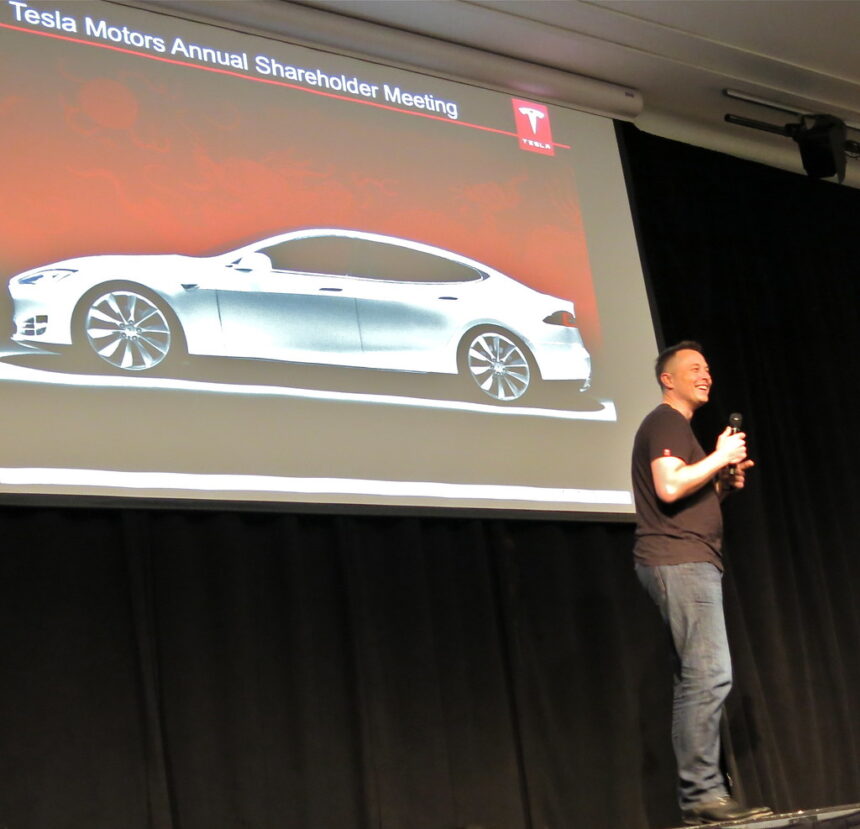The adoption of electric vehicles (EVs) in Europe has increased. Tesla should be the big winner of this news.
The company is experiencing a decline in sales across its most important markets.
According to the latest statistics from Norway, Germany France, Sweden and Denmark, consumers have turned their backs on Tesla and are instead choosing European, Japanese and even Chinese rivals.
It is difficult for the company to retain its dominant position in the EV market.
The situation is not just concerning to the shareholders of the company, it also reveals some important insights into the global economy and the adoption trajectory for EVs.
Data tells a story
Battery electric vehicles (BEVs), which accounted for 15.9% of EU total car sales by January 2025, compared to 10.9% in 2024, are growing in Europe.
Sales of BEVs grew by 34 percent, with positive growth seen in Germany, Belgium and the Netherlands.
In the EU, hybrid-electric cars now account for 34.9% new vehicle sales. They are the top choice of buyers.
Plug-in hybrid electric vehicles (PHEVs) are on the decline. They fell 8.5% in January as customers move towards full electrification.
Tesla sales have dropped nearly 50% in Norway where EVs will account for 96% (or all) new car sales by early 2025.
In January and February the company only sold 1,606 units, down from 2,887 in the same period of 2024.
Volkswagen’s sales grew 224.1%, Toyota by 97.6% and Nissan by 31.3%.
In Norway, the best-selling EV is no longer a Tesla. It’s the Toyota bZ4X. The Volkswagen ID was second.
Tesla’s best-selling Model Y has seen a 64.4% drop.
In January, BEVs sales in Germany, Europe’s biggest car market, grew by 53.5%.
Tesla has seen its presence wane as German carmakers increase production.
Volkswagen, BMW and Mercedes-Benz all gain ground as Tesla battles the effects of Germany’s 2024 subsidy reductions.
Tesla sales in France are down by 44% year to date.
Model Y has dropped to the 27th position in 2025. It is now behind the Peugeot 208 and Renault 5.
In France, EV sales have remained steady, and domestic automakers are benefiting from incentives.
Sweden and Denmark show similar patterns.
Sweden’s BEV share increased to 31.9%, while Tesla sales fell 42% in February. Model Y was down 52.1%.
Tesla sales dropped by 48 percent in Denmark. EVs accounted 65% of new vehicles sold, a year-on-year rise of 72%.
The figures show that the European electric vehicle market is growing, while Tesla’s direction is the exact opposite.
Why is Tesla declining?
Tesla’s problems in Europe go beyond numbers. Multiple challenges are hindering the company’s ability to compete.
There is now more competition. Volkswagen, BMW Peugeot Renault and Toyota all produce high-quality affordable EVs which directly compete with Tesla.
These models have lower prices, which makes them more attractive for buyers that previously preferred Tesla.
Incentives from the government also play an important role.
France has, for instance, structured their subsidies in a way that favours domestic automakers. This makes Tesla less appealing.
The abrupt cuts to German subsidies in 2024 have hurt the EV market in general. But Tesla has been particularly hit, as buyers relied on them in order to afford Tesla’s more expensive models.
Another major factor is the perception of consumers.
Recent research in Norway revealed that Elon Musk’s political views have led to a 67% decrease in the positive opinion of Tesla.
Tesla’s initial buyers were drawn to its innovation and exclusivity. However, this appeal has faded.
Tesla is not a niche-brand anymore. Tesla is just one of many carmakers in an overcrowded market, and its competitors are closing the gap. It is true that brand fatigue exists.
Service and reliability issues have also hurt the brand’s image.
Tesla is rated poorly by the Norwegian Consumer Council’s and NAF report, based on frequent complaints regarding customer service and repairs times.
Previously, many buyers thought that Tesla was the only option available for an EV. Now there are other options with better support.
Musk’s increasing political controversy is also playing a part. The support he has given to right-wingers such as Germany’s AfD and the influence he wields through U.S.
Donald Trump alienates European consumers.
European consumers have shown signs of disengagement with the brand, unlike in the US where Musk’s influence on politics might not impact Tesla’s sales.
The protests that have taken place at Tesla dealers in several countries indicate a rapid decline of public opinion about the company.
Tesla in Europe: Can it recover?
It is certain that the company will do everything possible to win back Europe’s confidence. Tesla will release a new Model Y in March 2025, called “Juniper”.
The company hopes that its refreshed model can help it reverse the decline.
It is still unclear whether just a cosmetic facelift will suffice to change the situation.
Tesla stands to gain from the new EU policy.
The European Commission will introduce a new automotive action plan, which includes incentives to electrify company fleets as well as funding for the battery manufacture in Europe.
Tesla may be able to regain lost ground if it can match these incentives.
The company faces many challenges.
The competition will increase and European automakers have aggressively expanded their electric vehicle lineups. Tesla’s greatest problem is not supply, but demand.
Tesla no longer dominates the European market.
Tesla will have to do much more than just release new models if it wants to recover. The company must lower its prices, enhance service quality and improve the brand’s image in Europe.
If not, then the drop seen at the start of 2025 could be just the beginning.
The history of brands shows how difficult it is to restore their image once they have been tarnished.
It is clear that Tesla has a long road ahead of it.
The post Europeans embrace EVs as Tesla implodes: Here’s Why appeared first on ICD






